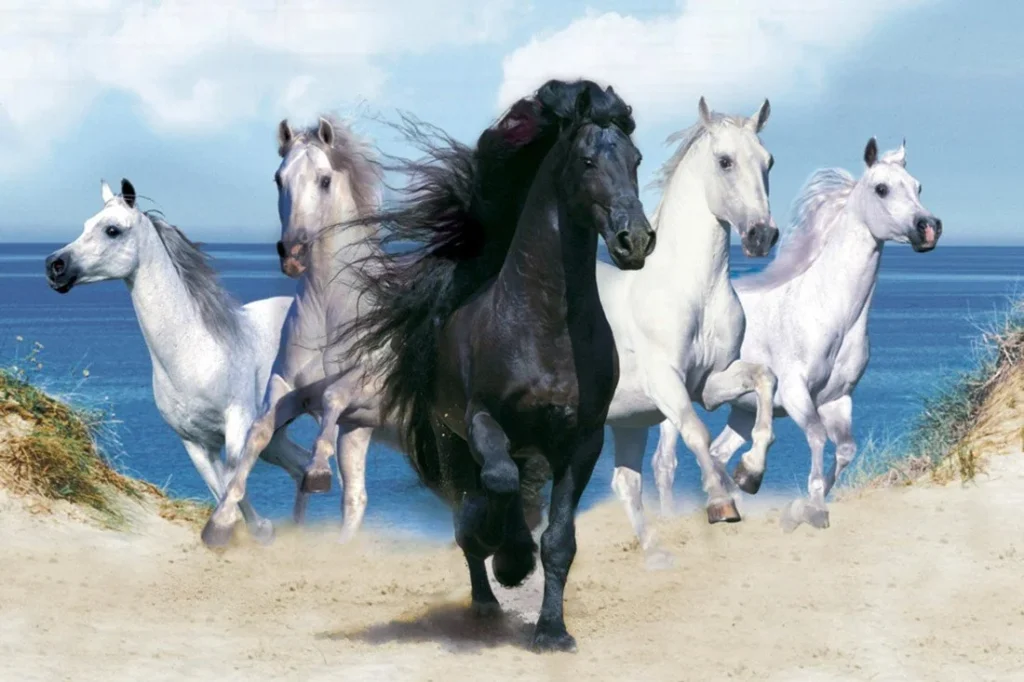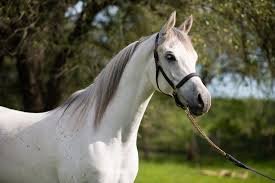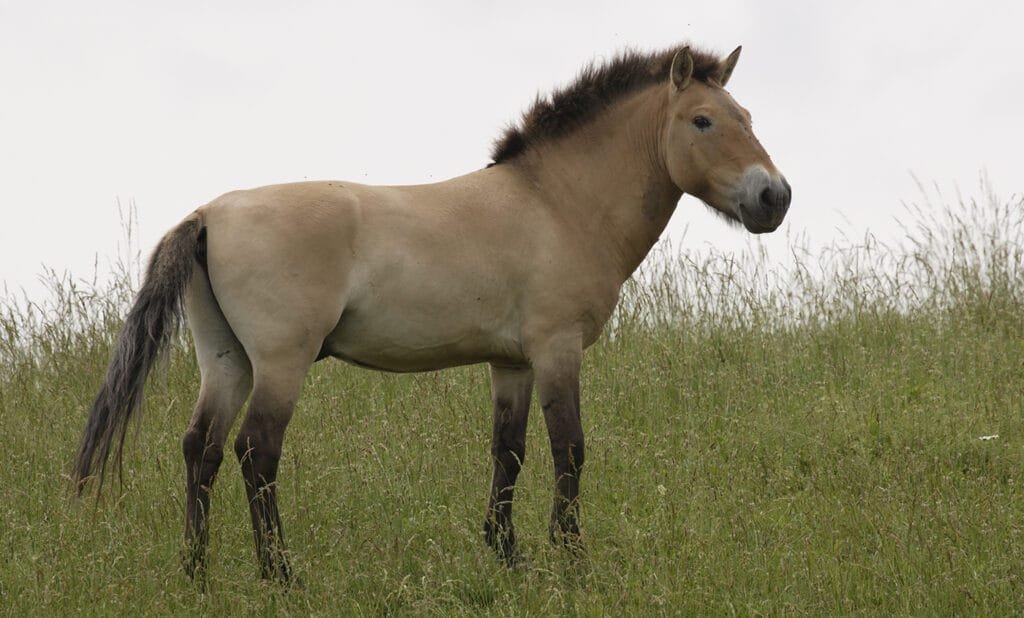Horses have significant role in history and various aspects of its modern economy.
Across Asia, horse breeds serve as living symbols of tradition, resilience, and cultural identity. From the rugged Mongolian horse to the graceful Arabian and the swift Thoroughbred, each breed brings unique qualities that enrich diverse sectors of the economy, from agriculture and transportation to sports and tourism. As Asia continues to evolve economically and socially, these horses not only preserve heritage but also inspire innovation and collaboration in harnessing their potential for sustainable development and global competitiveness.
1. Mongolian Horse: Resilience in Adversity

The Mongolian horse stands out for its exceptional resilience and adaptability, traits honed through centuries of surviving the harsh steppe climates. Known locally as “takhi” or “taki,” these horses are small yet robust, capable of enduring extreme temperatures and rough terrains. In Mongolia and neighboring regions, they serve essential roles in everyday life, from herding livestock to transporting goods across vast distances.Moreover, Mongolian horses are celebrated for their participation in traditional sports like horse racing and archery during Naadam, Mongolia’s national festival. Their ability to sustain high speeds over long distances makes them ideal contenders in endurance races, reflecting their practical and cultural significance in Mongolian society.
2. Akhal-Teke: Elegance and Endurance

Originating from Turkmenistan, the Akhal-Teke breed is renowned for its striking appearance and exceptional endurance. Characterized by their metallic sheen and slender build, these horses captivate with their beauty and performance capabilities. In Asia, Akhal-Tekes are prized for their role in endurance riding competitions, where their ability to cover vast distances with minimal fatigue is highly valued.Beyond sport, Akhal-Tekes contribute to the cultural heritage of Central Asia, often appearing in ceremonies and parades due to their regal bearing and historical significance. Their adaptability to arid climates further enhances their utility in regions where harsh environmental conditions prevail
3. Arabian Horse: Global Icon of Agility and Spirit

The Arabian horse, originating from the Arabian Peninsula, holds a distinguished reputation worldwide for its speed, endurance, and intelligence. In Asia, Arabians are prominent in various equestrian disciplines, from endurance riding to show jumping and dressage. Their athletic prowess and graceful demeanor make them sought after in competitive arenas and breeding programs aimed at enhancing local horse stocks.In addition to their athletic abilities, Arabian horses contribute to cultural events and traditions across Asia, enriching festivities with their presence and symbolic significance. Their versatility extends to leisure riding and recreational activities, highlighting their enduring appeal among enthusiasts and professionals alike.
4. Thoroughbred: Speed and Precision in Racing

Although not native to Asia, Thoroughbred horses have made a significant impact in the continent’s racing industries, particularly in countries like Japan and Korea. Bred for speed and agility, Thoroughbreds dominate the racing circuits and are central to the lucrative horse racing and breeding sectors. Their genetic lineage and performance records attract investments and attention, fueling a vibrant industry centered on pedigree, training, and competitive spirit.In Asia, Thoroughbreds symbolize excellence in racing and are instrumental in advancing breeding programs that aim to produce faster and more competitive racehorses. Their influence extends beyond the racetrack, shaping cultural attitudes toward equestrian sports and the pursuit of excellence in horsemanship.
5. Chinese Mongolian Horse (Hequ): Versatility and Heritage

Native to China and often referred to as the Hequ horse, the Chinese Mongolian horse embodies versatility and historical significance. Traditionally used for herding and agricultural purposes, these horses continue to play essential roles in rural communities across China. Their sturdy build and adaptability make them well-suited for diverse tasks, including transport and recreational riding.In recent years, efforts have been made to preserve and promote the Hequ breed, recognizing its cultural and genetic value within China’s broader equestrian heritage. The breed’s resilience and practicality reflect its enduring relevance in modern agricultural practices and leisure activities, contributing to sustainable livelihoods and rural development initiatives.
Top 5 horse Breed For Commercial Uses In Asia origin, primary uses in Asia,
| Horse Breed | Origin | Primary Uses in Asia | Key Characteristics |
|---|
| Mongolian Horse | Mongolia | Herding, transport, endurance racing, cultural festivals | Small, sturdy, resilient to harsh climates, capable of enduring long distances and rough terrains |
| Akhal-Teke | Turkmenistan | Endurance riding, ceremonial events, cultural heritage | Metallic sheen, slender build, exceptional endurance, adapted to arid climates |
| Arabian Horse | Arabian Peninsula | Endurance riding, show jumping, dressage, cultural events | Speed, endurance, intelligence, global recognition as an athletic breed |
| Thoroughbred | England (global use) | Horse racing, breeding programs, sport horse disciplines | Speed, agility, dominance in racing circuits, bred for competitive performance |
| Chinese Mongolian Horse | China | Herding, agriculture, transport, recreational riding | Versatile, sturdy, used traditionally for various agricultural tasks and leisure activities |
More Popular Search









